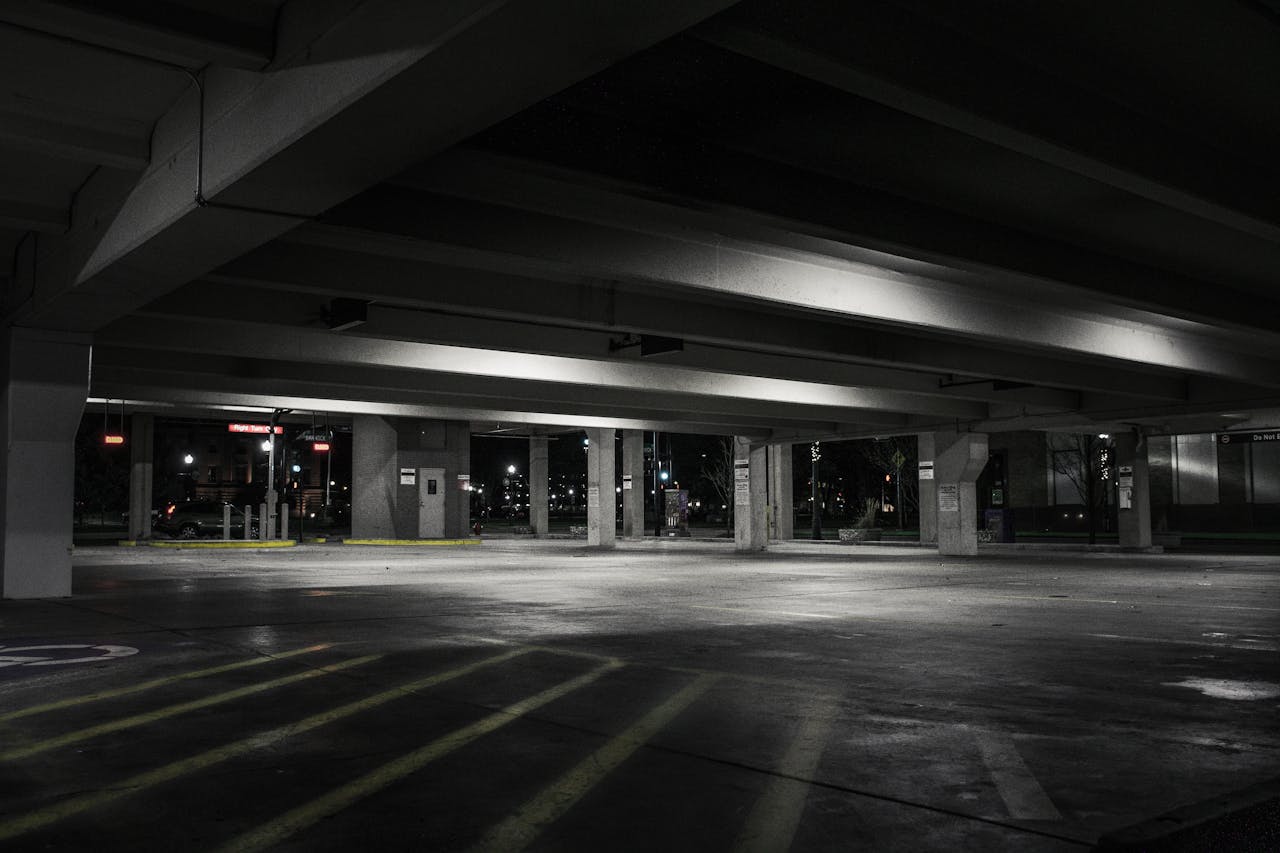Commercial properties in Miami-Dade and Broward rely on safe, well-maintained parking lots to welcome customers, tenants, and employees. Yet, many property owners underestimate how much parking lot design and upkeep affect safety, liability, and overall experience. From proper lighting to strategic signage and speed control, improving parking lot safety not only prevents accidents but also enhances your property’s professional image.
Why Parking Lot Safety Matters
Parking lots are among the most common locations for minor accidents and pedestrian injuries. Tight spaces, poor visibility, and distracted driving all contribute to risk. For business owners, these hazards can lead to liability claims, damaged vehicles, and frustrated customers. A well-planned lot reduces confusion, encourages slower speeds, and ensures safe pedestrian flow — essential for retail centers, medical buildings, warehouses, and office complexes throughout South Florida.
1. Maintain Smooth, Clearly Marked Pavement
A clean, level surface with visible striping is the foundation of parking lot safety. Faded lines can confuse drivers and pedestrians, while cracks or potholes create tripping and tire hazards. Routine asphalt maintenance — such as sealcoating, re-striping, and asphalt overlay — keeps your lot safe, compliant, and attractive.
When markings are fresh and bright, they clearly define traffic flow, parking spaces, loading zones, and fire lanes. In Miami-Dade and Broward, using reflective thermoplastic striping is a smart way to maintain visibility during heavy rain and nighttime hours.
2. Add Proper Lighting
Adequate lighting deters crime, improves visibility, and ensures pedestrians feel secure after dark. LED fixtures with motion sensors are energy-efficient and provide even illumination across wide areas. Focus on high-traffic zones like entrances, exits, walkways, and payment stations. For commercial buildings that operate at night — such as warehouses or hospitals — lighting is not optional; it’s essential for safety and liability prevention.
3. Install Speed Bumps and Signage
Speed control is vital in commercial settings where cars and pedestrians share space. Speed bumps and humps help slow vehicles to safe speeds, especially near crosswalks or entrances. Pair them with clear signage such as “Yield to Pedestrians,” “Speed Limit 5 MPH,” or “Stop Ahead” to guide drivers effectively.
Local paving contractors in South Florida can install asphalt or rubber speed bumps that comply with county safety standards. Well-marked bumps painted with reflective yellow or white stripes ensure drivers see them clearly day and night.
4. Designate Pedestrian Walkways
In busy commercial lots, separating vehicles from foot traffic prevents accidents. Paint crosswalks using reflective, slip-resistant coatings and position them strategically between parking areas and entrances. Adding bollards or curbing further protects pedestrians and defines walking paths.
5. Improve Drainage and Curb Systems
Standing water after heavy rain not only damages asphalt but also creates slippery, unsafe walking areas. Proper curb and gutter systems channel water efficiently to drains and prevent erosion. In South Florida’s humid climate, maintaining clear gutters and catch basins is crucial to keeping parking areas functional and safe year-round.
6. Enforce Clear Traffic Flow
Directional arrows, one-way lanes, and entrance/exit signage reduce confusion and congestion. For larger commercial properties, consider adding medians or landscaped islands to separate lanes and control turning movements. A clear layout helps traffic move smoothly and minimizes blind spots.
7. Schedule Regular Inspections
A proactive inspection routine keeps small issues from becoming costly hazards. Inspect your lot quarterly for cracks, oil buildup, faded lines, or drainage blockages. Partnering with a local asphalt maintenance company ensures issues are repaired promptly, keeping your business compliant with Miami-Dade and Broward safety codes.
FAQs About Parking Lot Safety for Businesses
How often should parking lots be re-striped?
Every 12–18 months, depending on traffic and weather exposure. Fresh paint improves visibility and organization.
Do I need county approval for speed bump installation?
Yes. Both Miami-Dade and Broward counties require speed bump installations to follow FDOT-approved specifications.
What lighting is best for commercial parking lots?
LED lighting is energy-efficient, long-lasting, and offers consistent brightness for security and visibility.
How can I reduce liability in my parking lot?
Regular maintenance, clear signage, and ADA-compliant accessibility help prevent accidents and reduce claims.
Should I sealcoat my parking lot regularly?
Yes. Sealcoating every 2–3 years protects asphalt from UV damage, water intrusion, and chemical spills.
What’s the best way to control speeding?
Combine clearly marked speed bumps with posted speed limits and directional arrows to guide drivers safely.
Can proper drainage really improve safety?
Absolutely. Good drainage prevents puddles, hydroplaning, and asphalt deterioration — all of which pose safety risks.
